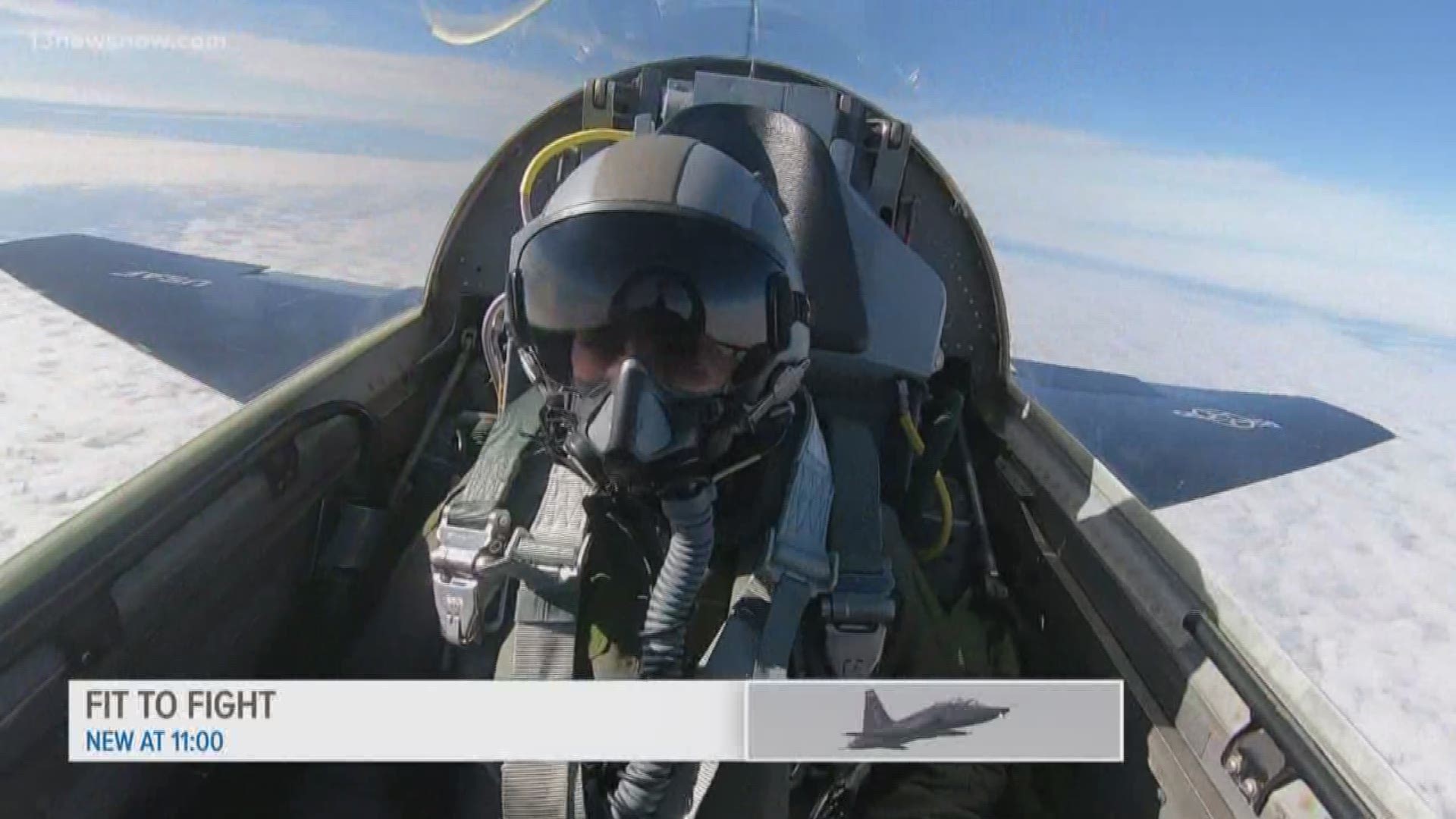HAMPTON, Va. — They have to be ready to fight at a moment's notice. U.S. Air Force fighter pilots are constantly training for the call.
All that flying, though, is tough on the body. Injuries are common and they can easily land a pilot on the 'Do Not Fly' list. That's not good, considering experienced pilots are hard to come by.
But now, a program started at Joint Base Langley Eustis in Hampton is changing the game for fighter pilots. An embedded physical therapist is getting "DNF" pilots back in the cockpit while preventing younger ones from having injuries in the first place.
Lt. Col. Cheryl "Score" Buehn has been in the Air Force for 18 years. She's flown her whole career.
"I started out flying the F-16," she said. "And then went to the T-38 doing different training, and then somewhere throughout that I flew the E-11 BACN in Afghanistan."
Score -- which is her call sign -- certainly has the one thing fighter pilots require: grit.
"I just knew that being a pilot was where I wanted to go with my career," she said.
She quickly learned it's hard work.
"Flying fighters is very much a demand on your body, and your mind as well," she said.
The equipment is heavy on your back. In the case of a T-38, that means a 50-pound parachute. The bulk of the helmet makes it hard to move your neck and look around. And of course, there str all those gravitational G-forces.
"So, let's say your head weighs 15 pounds, and you're going to pull 4 Gs. Your head now weighs 60 pounds," she explained.
It's a phenomenon that you have to feel to really understand, so, I went up in a T-38 piloted by Score.
Make no mistake, though, there were two medical evaluations and a full day of training that went into the flight. You cannot simply jump into a jet and go.
Some of the training includes how to handle G forces while in the air. It's incredible, Madeline said, how just a few Gs feel on the body.
Meanwhile, pilots like Score are doing this day in and day out.
"Fighter pilots frequently have the tendency for neck and back pain," Score said.
That kind of injury is nothing to brush off in a high stress, high danger job like this, so it doesn't take a lot to be put on the DNF list.
"To lose even one pilot can hurt readiness," Score said.
In walks Captain Michelle Jilek, doctor of physical therapy.
"I'm really close to the flight line. I can see them minutes after they get out of their plane," Jilek said.
In 2019, Jilek changed the game for pilots at JBLE by becoming an embedded physical therapist with the 1st and 192nd Fighter Wings.
"It only takes about 40 minutes of BFM -- or basic fighter maneuvers -- to decrease the level of the spine by about 5 millimeters," she said.
Not only is she treating injuries post-flight, she's changing a culture, starting with young pilots.
"Getting just one person back in the plane is a huge deal," she said. "Like yes, flying at 5, 7, 9 Gs is going to have an impact on the spine, but we can make it not quite so bad with some preventative care, or 'pre-hab,'" Jilek said.
This is something Score wishes she had 18 years ago.
"It's effective... it's... I don't even know how to sing her praises enough!" Score said.
But, you can only look forward in this kind of profession.
"I am excited to see this program take off," the Lt. Col. said.
"Embedded care, I think, is the future of medicine in the military," Jilek said. "I think I'm just the beginning."

